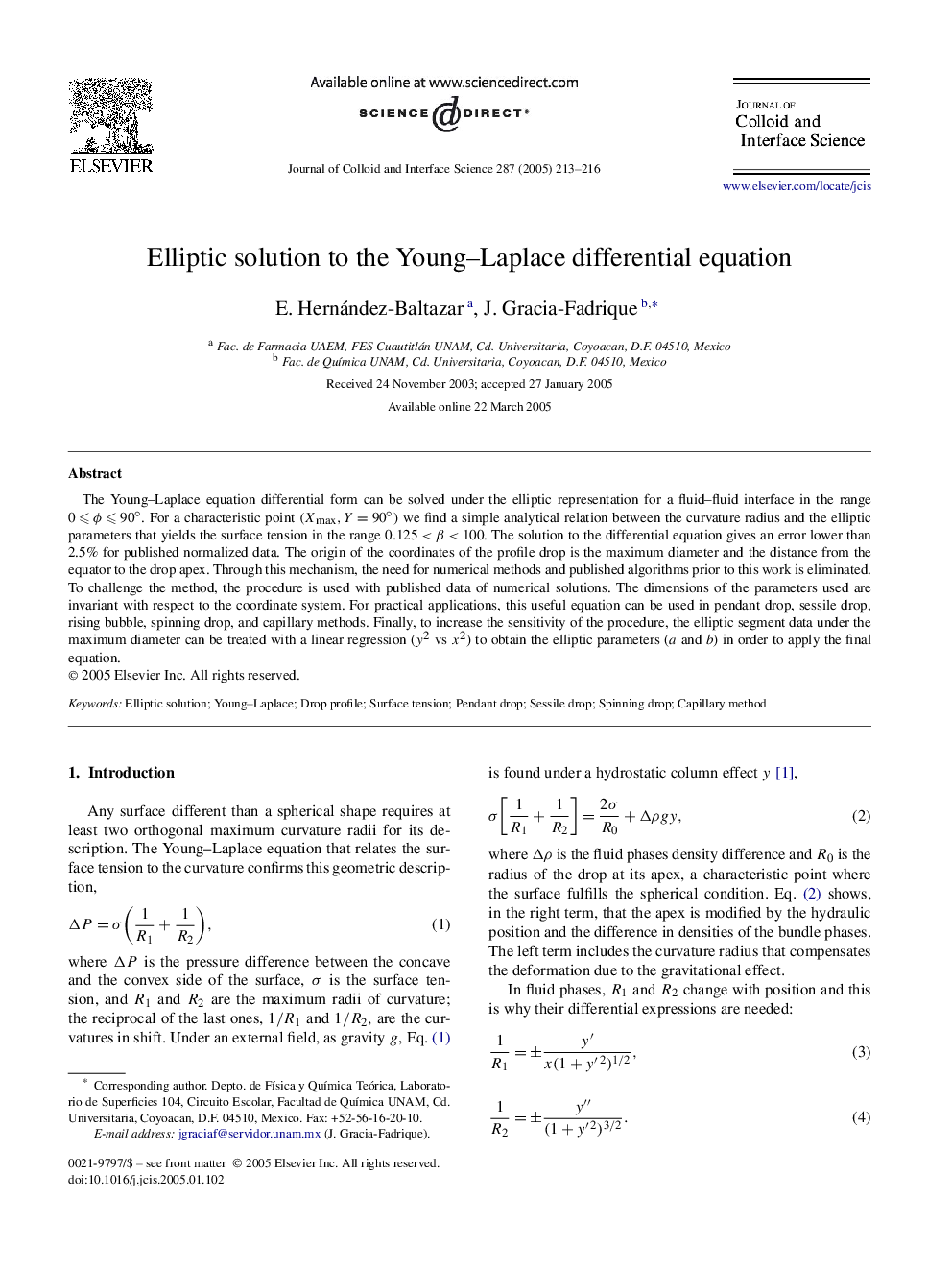| Article ID | Journal | Published Year | Pages | File Type |
|---|---|---|---|---|
| 10378037 | Journal of Colloid and Interface Science | 2005 | 4 Pages |
Abstract
The Young-Laplace equation differential form can be solved under the elliptic representation for a fluid-fluid interface in the range 0⩽Ï⩽90°. For a characteristic point (Xmax,Y=90°) we find a simple analytical relation between the curvature radius and the elliptic parameters that yields the surface tension in the range 0.125<β<100. The solution to the differential equation gives an error lower than 2.5% for published normalized data. The origin of the coordinates of the profile drop is the maximum diameter and the distance from the equator to the drop apex. Through this mechanism, the need for numerical methods and published algorithms prior to this work is eliminated. To challenge the method, the procedure is used with published data of numerical solutions. The dimensions of the parameters used are invariant with respect to the coordinate system. For practical applications, this useful equation can be used in pendant drop, sessile drop, rising bubble, spinning drop, and capillary methods. Finally, to increase the sensitivity of the procedure, the elliptic segment data under the maximum diameter can be treated with a linear regression (y2 vs x2) to obtain the elliptic parameters (a and b) in order to apply the final equation.
Related Topics
Physical Sciences and Engineering
Chemical Engineering
Colloid and Surface Chemistry
Authors
E. Hernández-Baltazar, J. Gracia-Fadrique,
